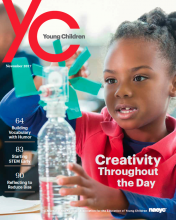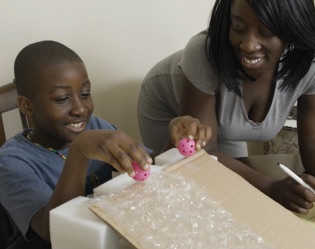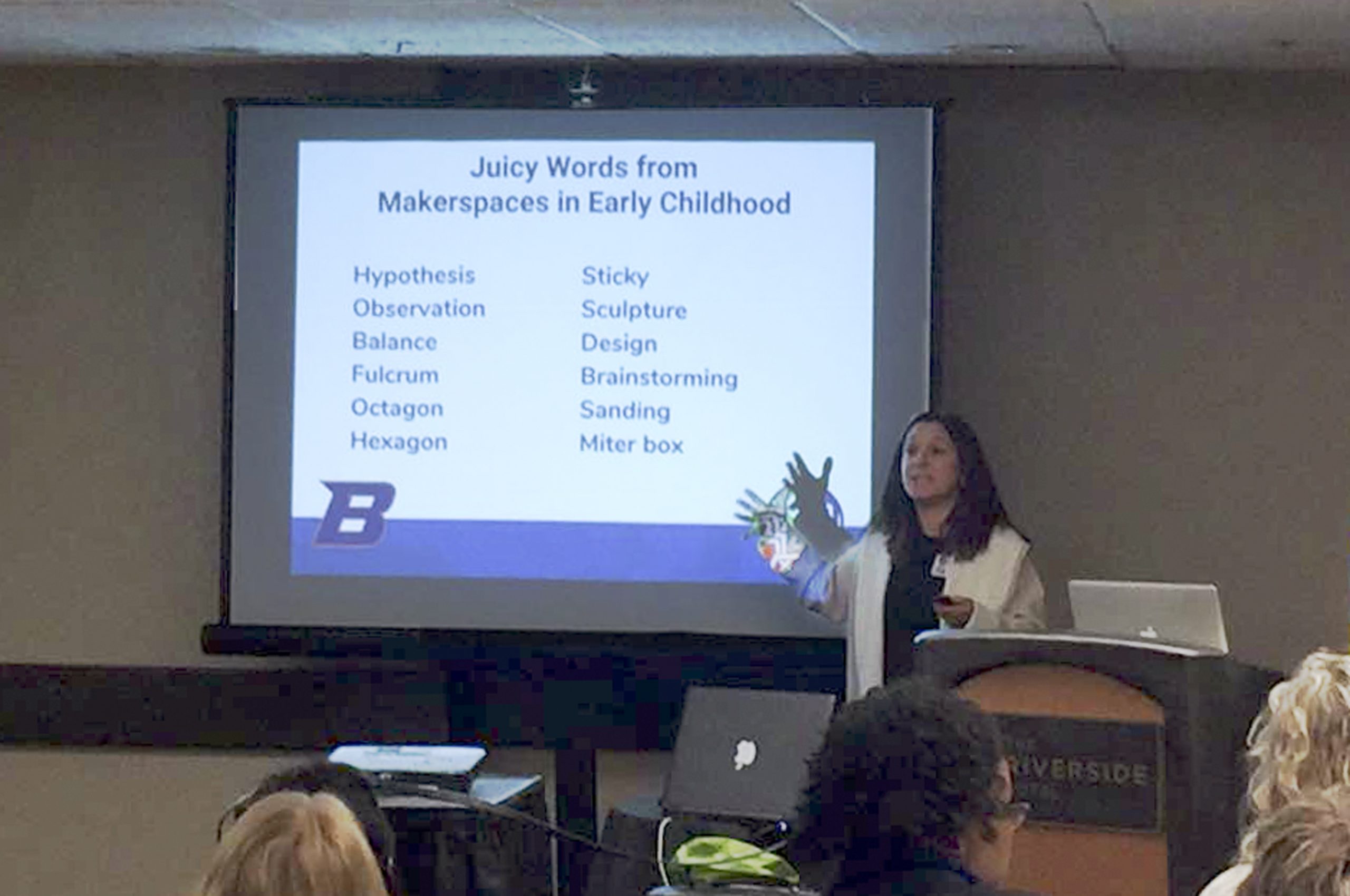 The following excerpt from “More Than a Foundation: Young Children Are Capable STEM Learners” by Elisabeth McClure was originally published in the November 2017 issue of Young Children. It appears here courtesy of NAEYC.
The following excerpt from “More Than a Foundation: Young Children Are Capable STEM Learners” by Elisabeth McClure was originally published in the November 2017 issue of Young Children. It appears here courtesy of NAEYC.
Two second-graders sit on their knees with quiet intensity, stacking unit blocks on a wide tower, higher and higher. A casual observer might think they’re simply enjoying the scale of their project and looking forward to knocking it down. Their teacher might see more, understanding that their activities are setting the stage for important spatial skills and physics concepts. Reaching as high as she can, one of the children drops a marble into the top of the tower, which is now over five feet high. Both children observe the tower intently. They hear a click, click, click, click, but no marble is in sight. The marble finally emerges from the bottom of the tower, rolling down a ramp and onto the carpet. The two children jump up and down, clapping and exclaiming, “Yay!” (The opening vignette is drawn from a video embedded in Revealing the Work of Young Engineers in Early Childhood, by Beth Van Meeteren and Betty Zan, available at http://ecrp.uiuc.edu/beyond/seed/zan.html.)
What is easy to miss in this scenario is the engineering capacity already present in these two young children. The children had hidden in their tower a series of zig-zagging ramps—like the ramps in a parking garage—each placed at a precise distance from the previous one and stacked with care at alternating heights. In fact, the children had built and tested several smaller prototypes of the tower to determine the appropriate ramp distances. One of their key discoveries was that putting the ramps too close together resulted in too much marble speed (the marble would shoot out the sides of the tower), but putting the ramps too far apart resulted in the marble dropping straight down through the center of the tower. They worked collaboratively to get the design right, then they built the deceptively simple-looking tower on a larger scale with a complex, invisible inner structure (Van Meeteren & Zan 2010).
In the minds of these children, too, there was a complex inner process—one that is hard to see, which often results in adults underestimating young children’s current capacities. As new research shows, many people believe that “real” science, technology, engineering, and mathematics (STEM) learning doesn’t occur until children are older, and that exposure to STEM concepts in early childhood (birth to 8 years) is only about laying a foundation for the serious STEM learning that takes place later (McClure et al. 2017).

Many people believe that “real” STEM learning doesn’t occur until children are older. This couldn’t be further from the truth. A recent two-year research analysis found that young children are capable of engaging in, at developmentally appropriate levels, the scientific practices that high school students carry out (McClure et al. 2017). As one researcher explained, young children “can make observations and predictions, carry out simple experiments and investigations, collect data, and begin to make sense of what they found” (16). Even in the first year of life, babies systematically test physical hypotheses when they see something that doesn’t conform to their expectations (McClure et al. 2017). For example, researchers showed 11-month-olds a toy car going off the side of a table and appearing to float; the babies were more likely to observe the strange car for longer than normally behaving toy cars and to try exploring and dropping the car themselves (Stahl & Feigenson 2015). And, as the children building the tower demonstrated, young children are capable of using engineering habits of mind (e.g., systems thinking, creativity, optimism, communication, collaboration, supported persistence, and attention to ethical thinking) in their free-play activities (Van Meeteren & Zan 2010).
The research is clear: when we say children are “born scientists,” we’re not just being cute; they really are active scientists, right now, systematically and intentionally exploring their environments, even from the day they are born.
Read the full article here: https://www.naeyc.org/resources/pubs/yc/nov2017/STEM-learners
Entry-level membership to NAEYC is $30 and comes with digital access to YC. See https://www.naeyc.org/get-involved/membership for more information.



